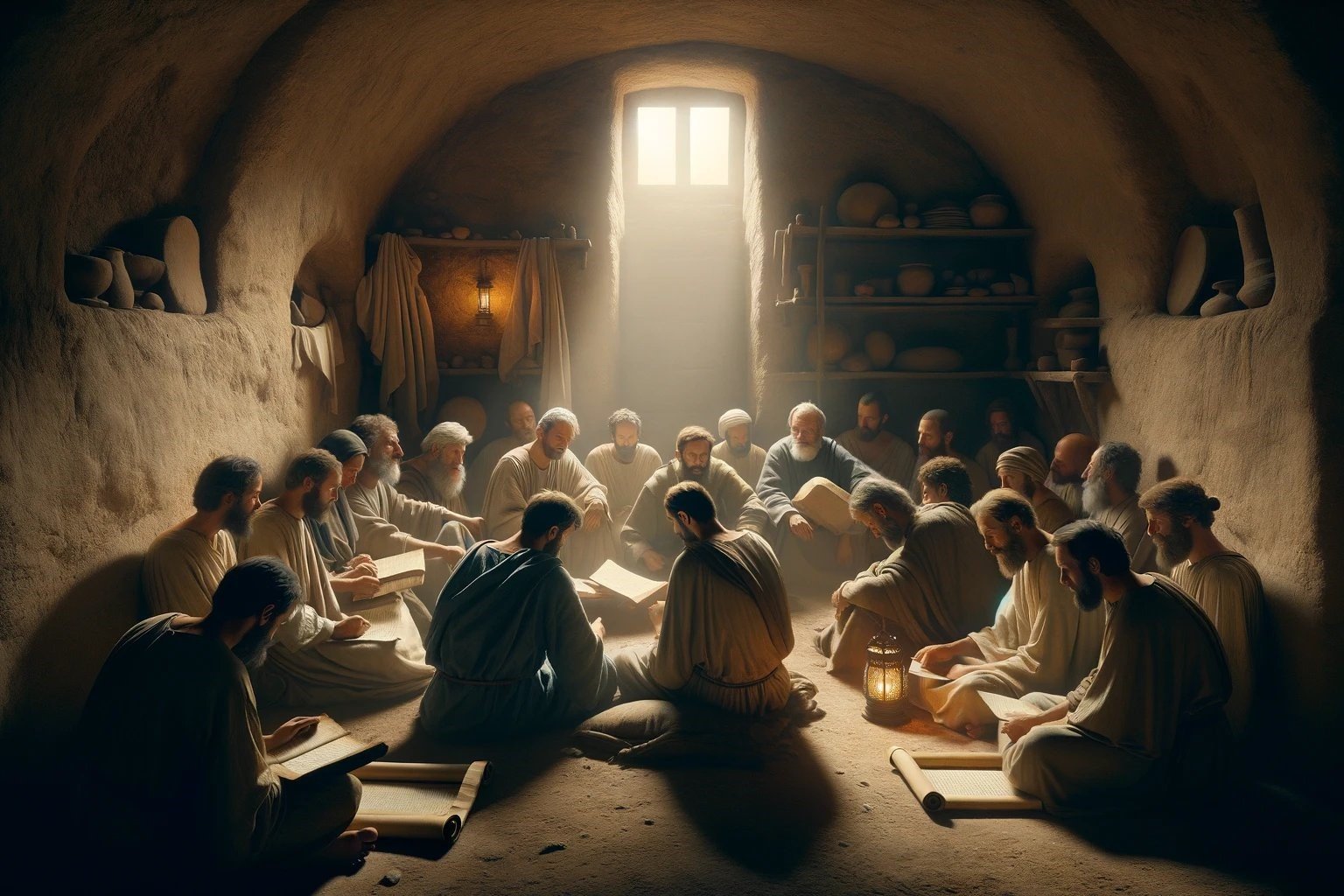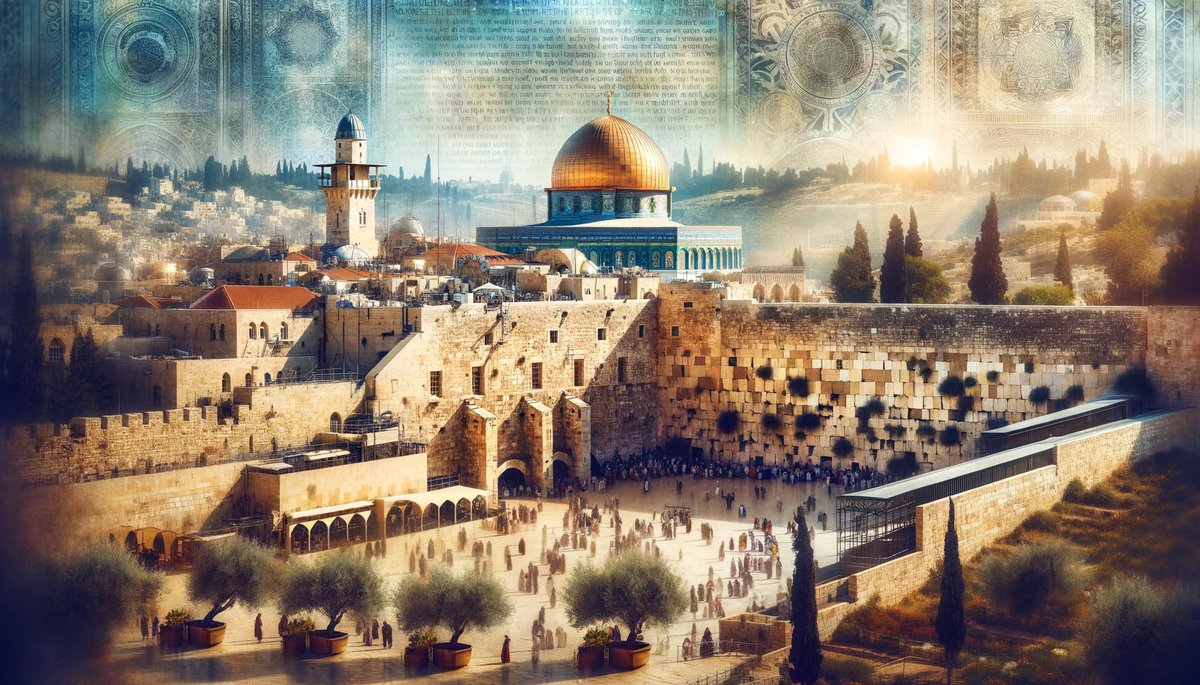Home>Bible Facts>Where Was John When He Received The Vision That Is Recorded In The Book Of Revelation?


Bible Facts
Where Was John When He Received The Vision That Is Recorded In The Book Of Revelation?
Published: February 11, 2024
Jason DeRose, Managing Editor at Christian.net, uses his expertise in religion and journalism to deepen understanding of faith's societal impacts. His editorial leadership, coupled with a strong academic background, enriches the platform’s diverse content, earning him recognition in both journalism and religious circles.
Discover where John was when he received the vision recorded in the Book of Revelation. Explore fascinating Bible facts and gain a deeper understanding of this pivotal moment in Christian history.
(Many of the links in this article redirect to a specific reviewed product. Your purchase of these products through affiliate links helps to generate commission for Christian.net, at no extra cost. Learn more)
Table of Contents
Introduction
The Book of Revelation, the final book of the New Testament, is a profound and enigmatic text that has captivated readers for centuries. Its vivid imagery, symbolic language, and apocalyptic themes have sparked countless interpretations and discussions. At the heart of this extraordinary book is the apostle John, who received a remarkable vision that forms the basis of the entire work.
As we delve into the circumstances surrounding John's reception of this extraordinary vision, we are drawn into a world of mystery, spirituality, and divine revelation. The location where John received this vision holds profound significance, as it provides context for understanding the spiritual and historical backdrop against which the Book of Revelation unfolds.
In exploring the whereabouts of John when he received this awe-inspiring vision, we embark on a journey that transcends mere geographical details. It is a journey that leads us to contemplate the profound spiritual truths and prophetic insights that permeate the pages of this ancient text. Join us as we unravel the mystery and significance of the location where John beheld the extraordinary vision that is recorded in the Book of Revelation.
The Background of the Book of Revelation
The Book of Revelation, also known as the Apocalypse of John, stands as a unique and enigmatic work within the New Testament. It is attributed to the apostle John, who is believed to have penned this extraordinary text during his exile on the island of Patmos. The book is characterized by its apocalyptic imagery, vivid symbolism, and prophetic messages, which have fascinated scholars, theologians, and readers throughout history.
Revelation is recognized for its profound themes of divine judgment, spiritual warfare, and the ultimate triumph of good over evil. The text is steeped in Old Testament imagery and draws upon a rich tapestry of prophetic traditions, including those found in the books of Daniel, Ezekiel, and Zechariah. Its complex symbolism and cryptic language have led to a wide array of interpretations, contributing to its enduring allure and mystique.
The historical context in which Revelation emerged is crucial to understanding its significance. The book was composed during a period of intense persecution of early Christians under the Roman Empire. The churches to which John addressed his letters were facing severe trials and tribulations, and the book sought to provide them with hope, encouragement, and a vision of God's ultimate victory over the forces of darkness.
The authorship of the Book of Revelation is traditionally ascribed to the apostle John, who was exiled to the island of Patmos for his Christian faith. It is believed that John received his visionary experiences during this period of exile, and it was in this setting that the profound and mystical revelations contained in the book were unveiled to him.
The Book of Revelation is a testament to the enduring power of faith in the face of adversity, offering a message of hope, perseverance, and the ultimate triumph of God's kingdom. Its profound themes and timeless relevance continue to resonate with readers across cultures and generations, making it a work of enduring significance within the Christian tradition.
As we delve into the location where John received the vision that is recorded in the Book of Revelation, it is essential to consider the rich historical and spiritual backdrop against which this extraordinary text emerged. The island of Patmos, where John experienced his visionary revelations, holds profound significance in shaping the context and meaning of the book's apocalyptic message.
The Location of John When He Received the Vision
The apostle John found himself on the island of Patmos, a remote and rugged isle in the Aegean Sea, when he received the extraordinary vision that forms the basis of the Book of Revelation. Patmos, known for its rocky terrain and isolation, served as the setting for John's exile, a consequence of his unwavering commitment to the Christian faith during a period of intense persecution of early believers.
Amidst the stark beauty of this secluded island, John experienced a series of profound and mystical revelations that would shape the course of Christian history. It was within this rugged and solitary landscape that the apostle encountered the divine visions that would ultimately be transcribed into the apocalyptic text known as the Book of Revelation.
The island of Patmos, with its rugged cliffs and breathtaking vistas, provided a fitting backdrop for the unfolding of John's visionary experiences. The solitude and natural grandeur of the island likely contributed to an atmosphere of spiritual contemplation and receptivity, creating an environment conducive to profound encounters with the divine.
John's location on Patmos holds deep symbolic significance as well. The isolation and physical separation from the mainland mirrored the spiritual separation from the societal and cultural norms of the time. It was in this remote and spiritually charged setting that John's visionary experiences unfolded, transcending the confines of earthly limitations and offering glimpses into the heavenly realms.
The geographical context of Patmos also played a crucial role in shaping the imagery and symbolism found in the Book of Revelation. The island's rugged terrain, the expanse of the sea, and the celestial beauty of the night sky likely influenced the vivid and evocative language used to describe the heavenly visions and apocalyptic events portrayed in the text.
The location of John's visionary experiences on the island of Patmos serves as a poignant reminder of the profound intersection between the physical and spiritual realms. It is a testament to the transformative power of divine encounters in unexpected and secluded places, where the ordinary becomes extraordinary, and the mundane becomes infused with transcendent meaning.
As we consider the location where John received the awe-inspiring vision that is recorded in the Book of Revelation, we are invited to contemplate the profound significance of physical surroundings in shaping spiritual experiences and the enduring impact of divine revelations in the most unlikely of settings.
The Significance of the Location
The island of Patmos, where the apostle John received the extraordinary vision that is recorded in the Book of Revelation, holds profound significance in illuminating the spiritual and historical backdrop against which this remarkable text unfolded. The location of John's visionary experiences on Patmos carries multifaceted significance that enriches our understanding of the Book of Revelation and its enduring impact.
First and foremost, the rugged and isolated nature of Patmos served as a physical backdrop for John's exile and visionary encounters. The harsh, rocky terrain and the solitary environment of the island provided a stark contrast to the bustling centers of the Roman Empire, where early Christians faced persecution and adversity. In this secluded setting, John found himself removed from the societal pressures and distractions of the mainland, creating an environment conducive to spiritual contemplation and receptivity to divine revelations.
Furthermore, the geographical context of Patmos played a pivotal role in shaping the imagery and symbolism found in the Book of Revelation. The island's rugged cliffs, the expanse of the sea, and the celestial beauty of the night sky likely influenced the vivid and evocative language used to describe the heavenly visions and apocalyptic events portrayed in the text. The natural elements of Patmos became intertwined with the spiritual symbolism of the book, enriching its imagery with the raw beauty and elemental power of the island's landscape.
Moreover, the location of Patmos holds deep symbolic significance, reflecting the broader themes of spiritual separation and divine transcendence. John's physical separation from the mainland mirrored a spiritual separation from the societal and cultural norms of the time, emphasizing the transformative nature of his visionary experiences. The island of Patmos thus became a liminal space, a threshold between the earthly realm and the transcendent realities unveiled in John's visions, underscoring the profound intersection between the physical and spiritual dimensions of human experience.
In essence, the significance of the location where John received the vision recorded in the Book of Revelation extends beyond mere geographical details. It encompasses the convergence of physical, spiritual, and symbolic elements that enriched the visionary experiences of the apostle and infused the text with profound depth and enduring relevance. The island of Patmos stands as a testament to the transformative power of divine encounters in unexpected and secluded places, where the ordinary becomes extraordinary, and the mundane becomes infused with transcendent meaning.
Conclusion
In conclusion, the location where the apostle John received the awe-inspiring vision that is recorded in the Book of Revelation holds profound significance in shaping the spiritual, historical, and symbolic dimensions of this extraordinary text. The island of Patmos, with its rugged terrain, isolation, and natural grandeur, provided the backdrop for John's exile and visionary encounters, offering a setting conducive to profound spiritual experiences and divine revelations.
The geographical context of Patmos, characterized by its rocky cliffs, expansive sea, and celestial beauty, influenced the vivid imagery and symbolism found in the Book of Revelation. The elemental power and raw beauty of the island's landscape became intertwined with the spiritual symbolism of the text, enriching its apocalyptic visions with the profound depth and evocative language that continue to captivate readers across cultures and generations.
Furthermore, the isolation and physical separation of Patmos mirrored the spiritual separation from the societal and cultural norms of the time, emphasizing the transformative nature of John's visionary experiences. The island became a liminal space, a threshold between the earthly realm and the transcendent realities unveiled in John's visions, underscoring the profound intersection between the physical and spiritual dimensions of human experience.
The significance of the location where John received the vision extends beyond mere geographical details, encompassing the convergence of physical, spiritual, and symbolic elements that enriched the visionary experiences of the apostle and infused the text with enduring relevance. Patmos stands as a testament to the transformative power of divine encounters in unexpected and secluded places, where the ordinary becomes extraordinary, and the mundane becomes infused with transcendent meaning.
As we reflect on the location of John's visionary experiences on the island of Patmos, we are invited to contemplate the profound significance of physical surroundings in shaping spiritual experiences and the enduring impact of divine revelations in the most unlikely of settings. The enduring legacy of the Book of Revelation and the remarkable circumstances surrounding its composition serve as a testament to the enduring power of faith, hope, and the transformative nature of divine encounters in the most unexpected of places.















